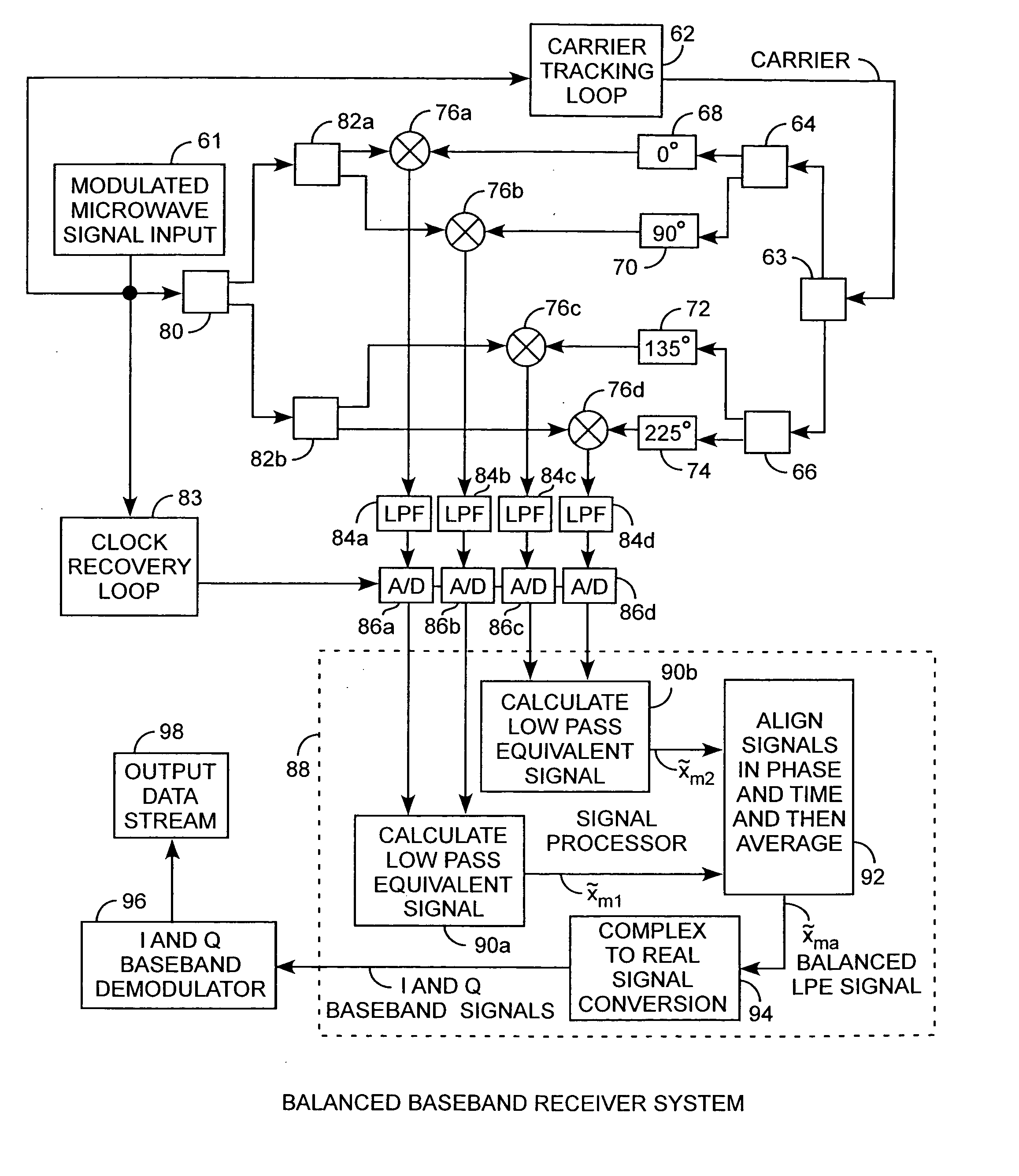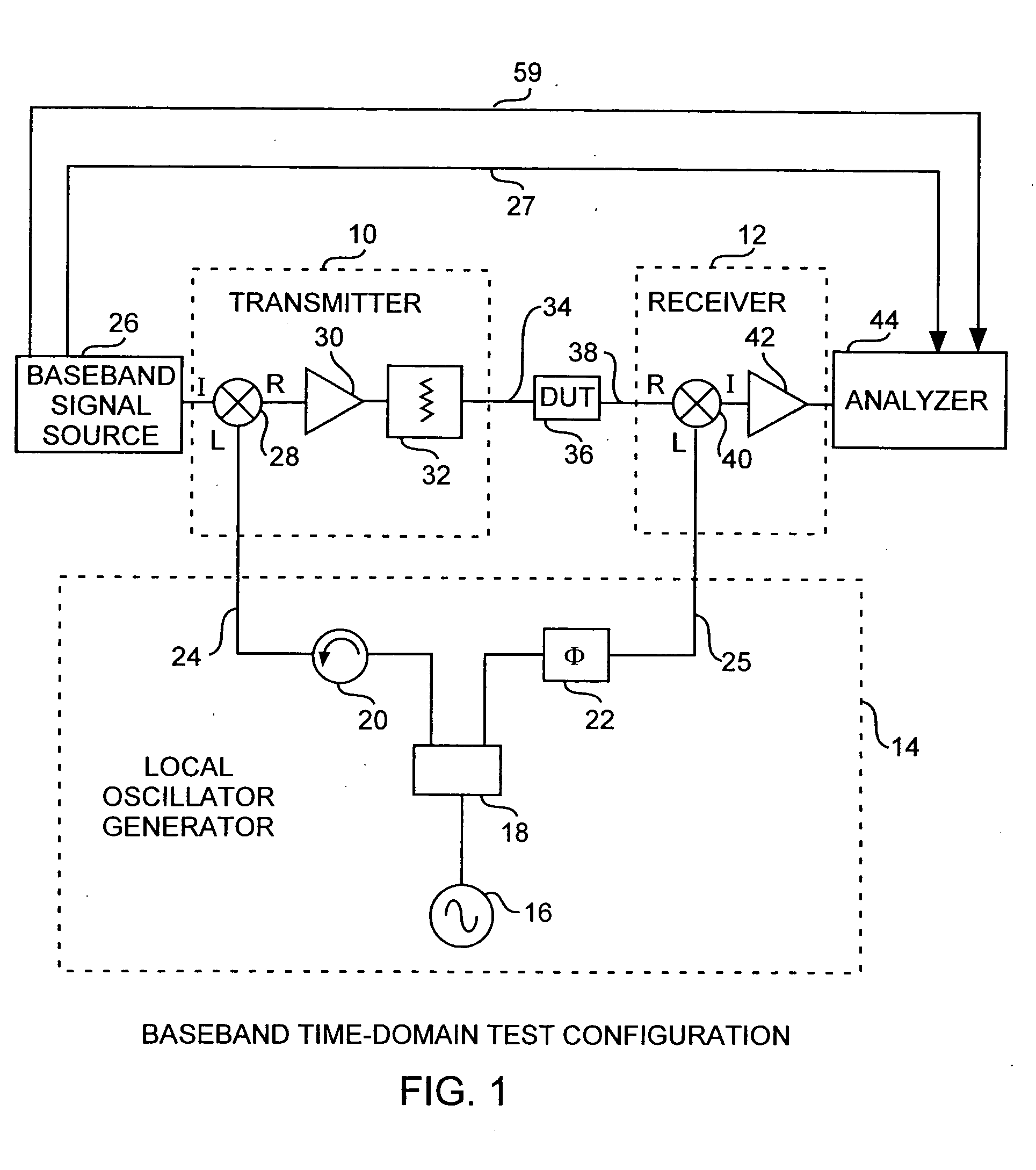Baseband time-domain communications system
a communication system and time-domain technology, applied in the field of baseband time-domain measurement methods of communications signals, can solve the problems of inability to accurately model the inability to capture the nonlinear dynamic response of the amplifier to input signals having non-negligible bandwidth, and the inability to accurately measure the waveform accuracy of the measured waveform, etc., to reduce imbalance errors, minimize ina
- Summary
- Abstract
- Description
- Claims
- Application Information
AI Technical Summary
Benefits of technology
Problems solved by technology
Method used
Image
Examples
Embodiment Construction
[0025] An embodiment of the invention is described with reference to the figures using reference designations as shown in the figures. Referring to FIGS. 1, 2 and 3, the baseband time-domain basic measurement test configuration system consists of an upconverting transmitter 10 and a downconverting receiver 12, both driven by a local oscillator generator 14, for measuring baseband waveforms. The oscillator generator 14 includes a local oscillator (LO) 16, a splitter 18 providing a local oscillator signal to an isolator 20 and phase shifter 22. The isolator 20 provides a fixed phase local oscillator signal 24 that may be considered as a carrier signal. The phase shifter 22 provides a variable phase local oscillator signal 25 that is used for coherent downconversion. In a broad form, the preferred transmitter 10 is driven by a baseband signal source 26 for providing a baseband test signal to the transmitter 10 and for providing a 10 MHz reference signal 27 and a trigger signal 59. The ...
PUM
 Login to View More
Login to View More Abstract
Description
Claims
Application Information
 Login to View More
Login to View More - R&D
- Intellectual Property
- Life Sciences
- Materials
- Tech Scout
- Unparalleled Data Quality
- Higher Quality Content
- 60% Fewer Hallucinations
Browse by: Latest US Patents, China's latest patents, Technical Efficacy Thesaurus, Application Domain, Technology Topic, Popular Technical Reports.
© 2025 PatSnap. All rights reserved.Legal|Privacy policy|Modern Slavery Act Transparency Statement|Sitemap|About US| Contact US: help@patsnap.com



